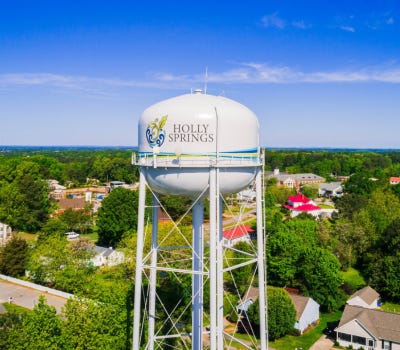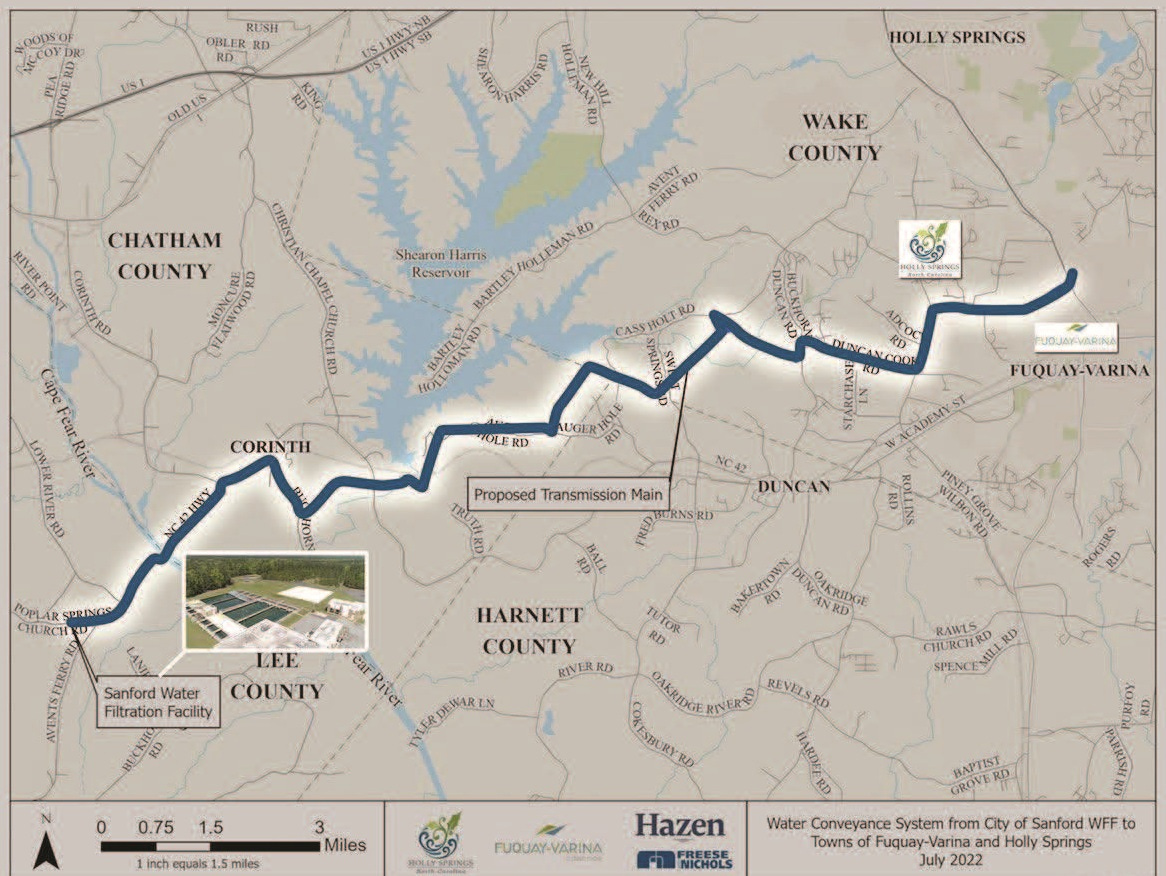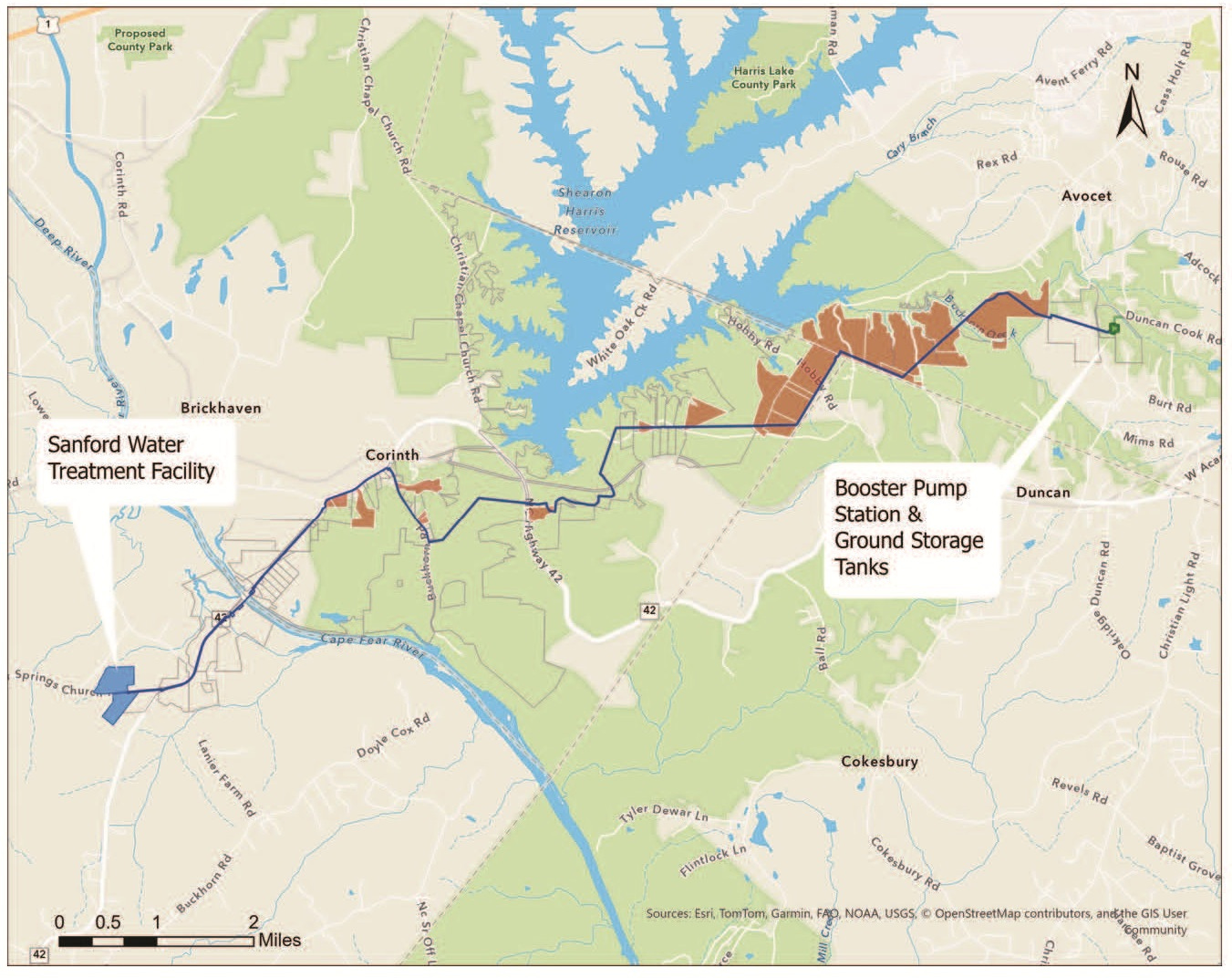From River to Faucet: How Holly Springs Gets Its Drinking Water
To prepare for continued growth, Holly Springs is partnering with Fuquay-Varina on a new 11-mile pipeline to bring treated water from the expanded Sanford Water Filtration Facility
Holly Springs, NC, Jul. 17, 2025 — When you turn on the tap, it’s easy to forget how far your water travels to reach your glass. For Holly Springs residents, that journey starts miles away—through rivers, treatment plants, and pipelines.
Unlike Cary and Apex, which operate their own joint treatment facility, Holly Springs doesn’t treat its own water. Instead, the town buys treated drinking water from regional partners and manages the local distribution.
A Shift from Wells to Regional Supply
Until the mid-1990s, Holly Springs relied on community wells as its primary source of water. As the town began to grow, officials evaluated long-term options and, by the early 2000s, signed a major purchase agreement with Harnett County. That agreement, still in place, provides up to 10 million gallons per day of treated water from the Cape Fear River.
In 2008, Holly Springs ceased regular water purchases from Raleigh and now primarily relies on Harnett County for its water needs. A conservative planning estimate suggests a daily usage capacity of around 6.7 million gallons.
A New Pipeline from Sanford
To prepare for continued growth, Holly Springs is partnering with Fuquay-Varina on a new 11-mile pipeline to bring treated water from the expanded Sanford Water Filtration Facility, now part of the TriRiver Water System. That facility is increasing its capacity from 12 to 30 million gallons per day.
The two towns signed a 99-year Interlocal Agreement in 2024 (link) outlining joint ownership, construction, and maintenance responsibilities. Holly Springs will own 37.5% of the infrastructure, while Fuquay-Varina will own the remaining 62.5%. Fuquay-Varina will also oversee construction and project administration.
The shared infrastructure will include two ground storage tanks and two booster pump stations along the pipeline route. Each town will be responsible for building its own distribution mains to deliver the water from the shared system into its local networks.
To secure the pipeline route, the towns are acquiring easements across Wake, Chatham, and Harnett counties. When voluntary agreements with property owners couldn’t be reached, both towns authorized condemnation proceedings in July 2025 to stay on schedule.
Construction is expected to begin in early 2026, with water delivery anticipated to commence by late 2027. The total project cost is $142.5 million, with Holly Springs contributing roughly $52.4 million. The town has already secured more than $2.6 million in EPA grant funding to help offset expenses.
Emergency Backups
Though the town doesn’t treat its own water, it maintains emergency connections to:
The City of Raleigh (Falls Lake/Neuse River Basin)
The Cary/Apex system (Jordan Lake/Cape Fear Basin)
These are used only in special circumstances, such as maintenance or emergencies.
How the Local System Works
Water is delivered already treated. Holly Springs stores and distributes it using:
Elevated tanks with 2.3 million gallons of total capacity
Pump stations
Underground mains
What’s in the Water?
Water from the Cape Fear River is tested regularly for contaminants. Among those tested:
Microorganisms like Cryptosporidium
PFAS ("forever chemicals")
1,4-dioxane, a likely carcinogen
PFAS and 1,4-dioxane come from industrial sources upstream and can persist through conventional treatment. Levels in Holly Springs’ water meet federal legal standards, but they exceed stricter health-based recommendations from the nonprofit Environmental Working Group (EWG).
Link to: 2024 Annual Drinking Water Quality Report for Holly Springs
Why This Matters
Holly Springs is experiencing rapid growth, and water demand is increasing. While current contracts are solid, town leaders are expanding partnerships and infrastructure to ensure future stability. The Sanford pipeline represents a significant step toward enhanced control and long-term resilience.



